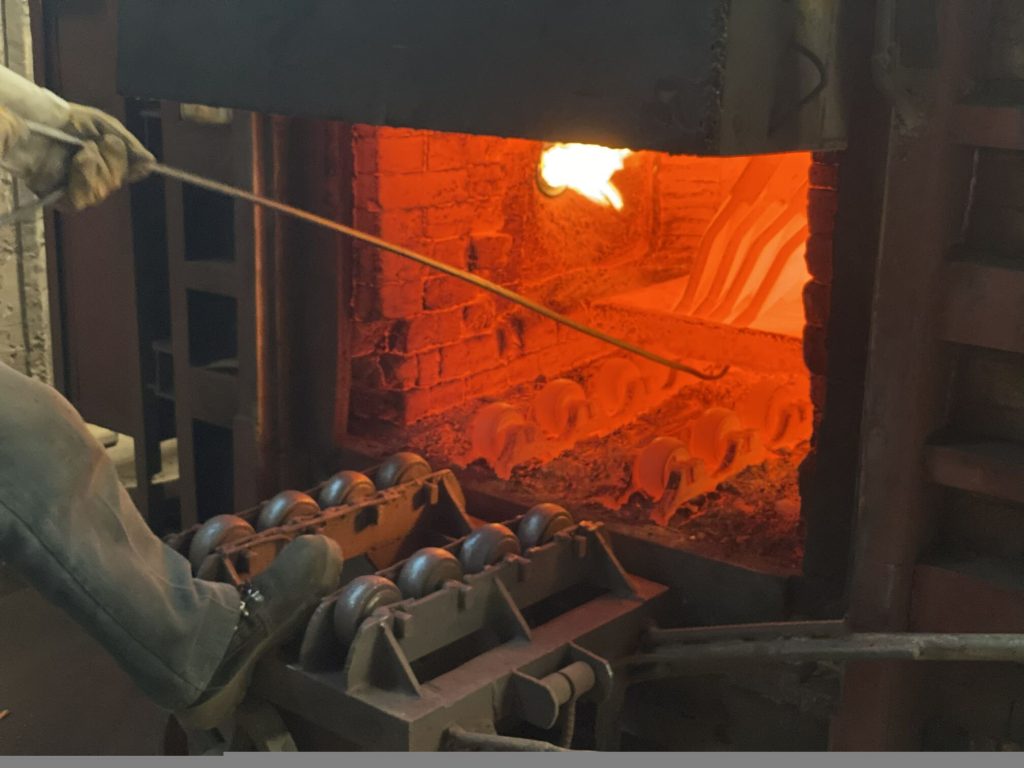
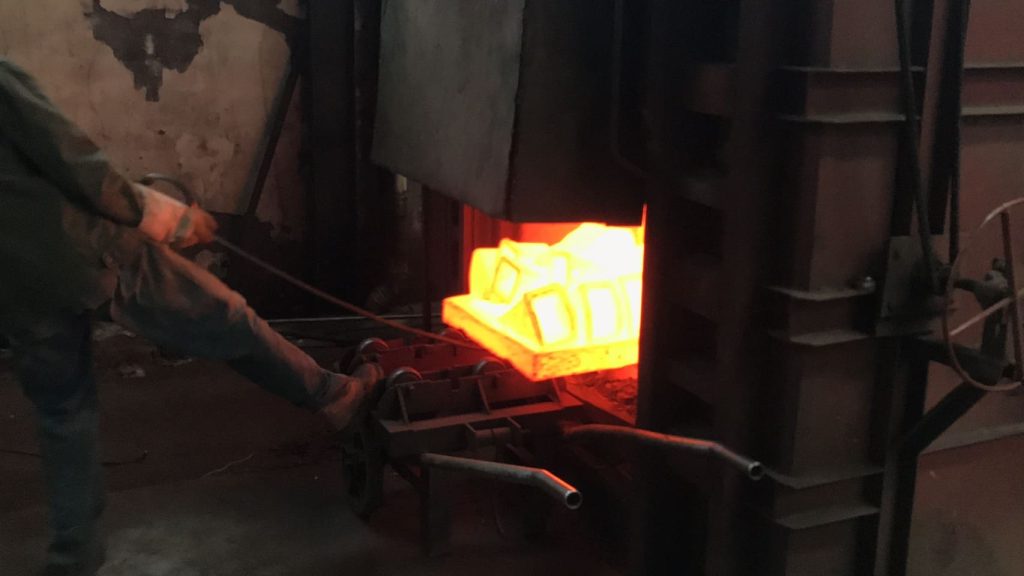
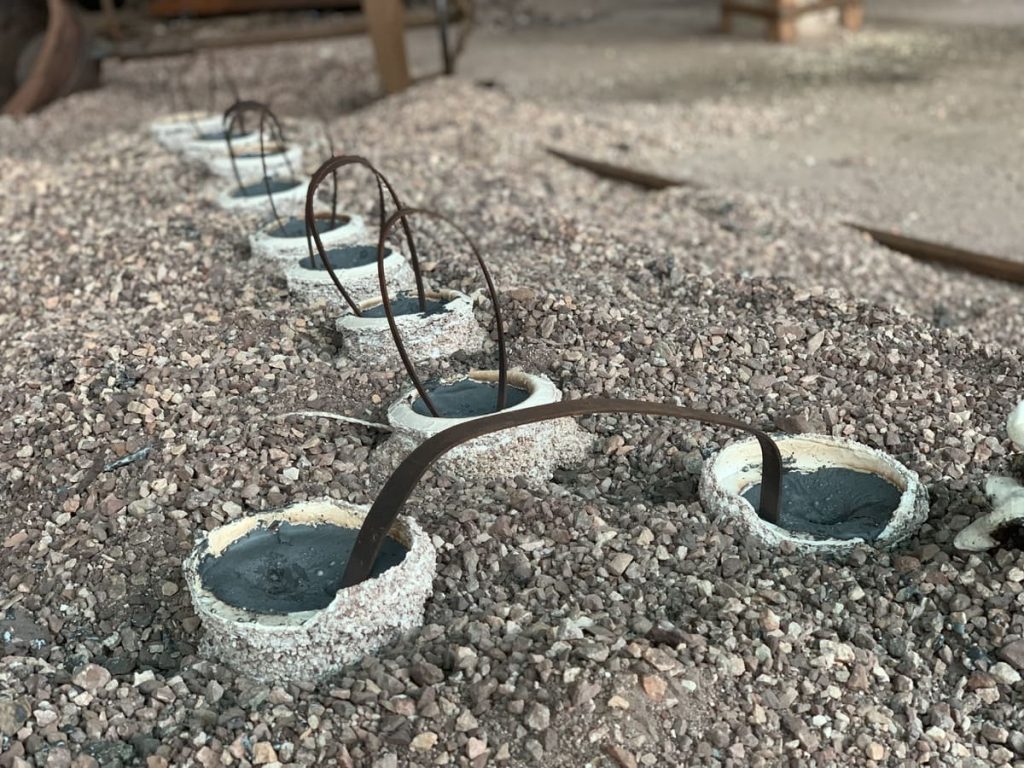
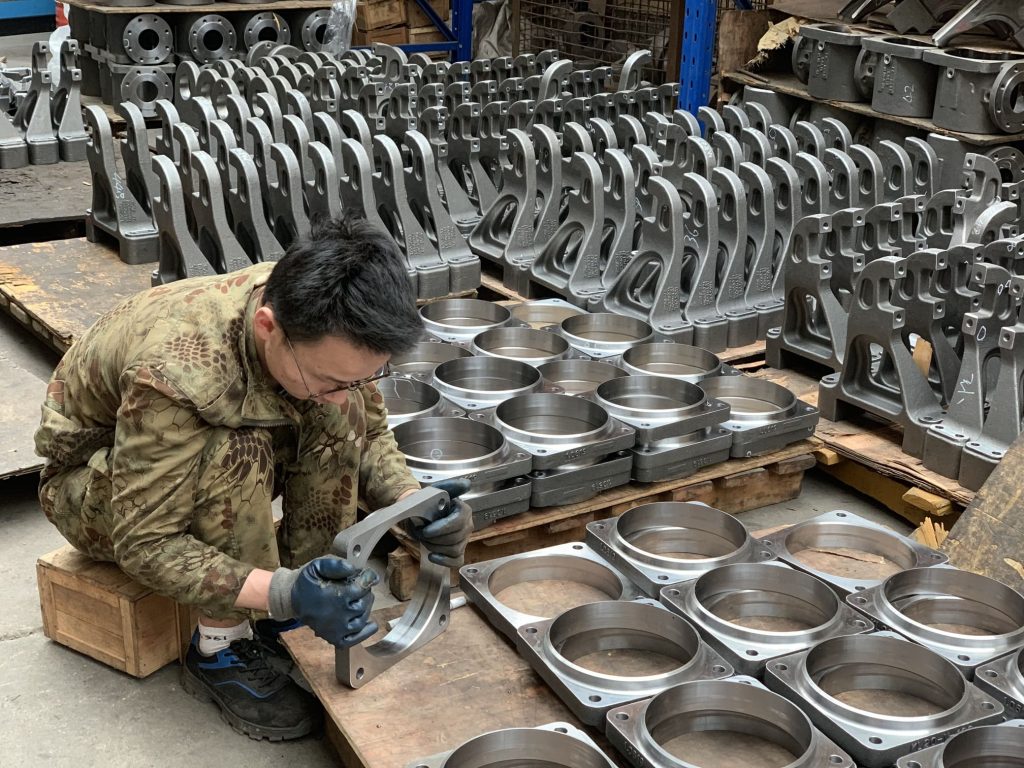
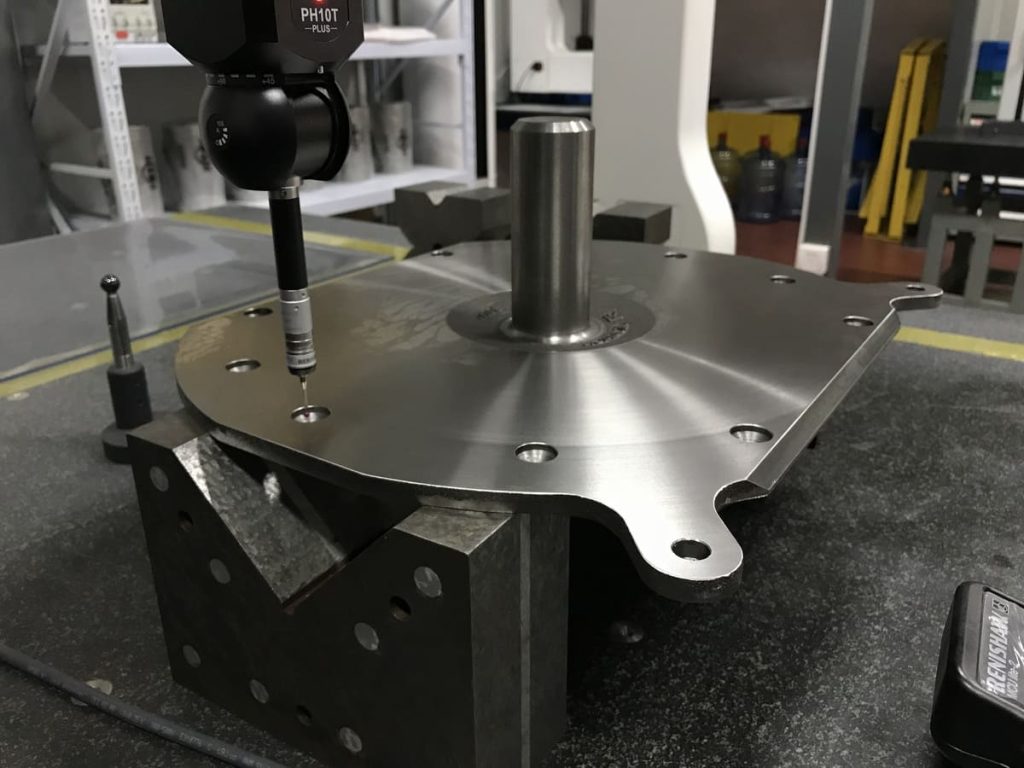
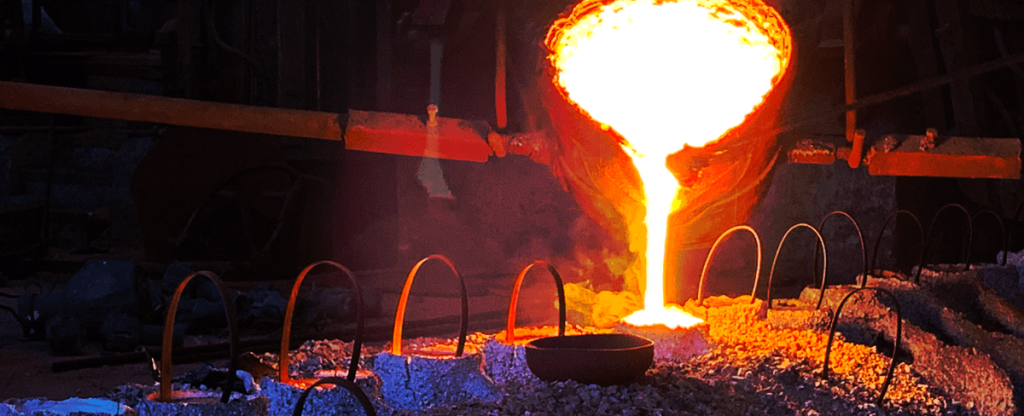
There are numerous types of iron, each serving different purposes in casting:
White Iron
The carbide microstructure of white iron gives it the feature of being extremely hard and brittle. This quality is what distinguishes white iron from other types of iron. Because of this, it is exceptionally resistant to wear and is an excellent choice for abrasive applications such as grinding balls and sections of slurry pumps.
Gray iron is highly regarded for the superior machinability it offers, in addition to the outstanding wear resistance it possesses. Because of the inherent damping capabilities provided by its microstructure, which is characterized by graphite flakes, it is a popular choice for constructing engine blocks, pipelines, and other machinery parts.
The spherical shape of the graphite inclusions in ductile iron is the source of the material’s unique qualities, which include great strength and the ability to be shaped easily. Because of this, it is an ideal material for components that require both toughness and vibration dampening, such as automobile components and heavy-duty machinery. Specifically, this makes it an excellent material for automotive parts.
After undergoing heat treatment, malleable iron’s carbon content is transformed into graphite nodules, improving the material’s ductility and toughness. This material is utilized to produce tiny castings that call for high tensile strength and resistance to impact.
It can withstand both abrasion and depression without being damaged. It ensures that the castings are scratch-free and smooth in the appropriate places as required.
The material can withstand the most significant stress over a prolonged period without cracking.
longevity.
It can transform itself without suffering any damage. This comes in handy, particularly when constructing intricate shapes and patterns.
Cast iron has a high resistance to wear and tear. It can store a significant amount of energy. It is trustworthy due to its
This makes it possible for the materials to return to their original form once they have been deformed.
Because of this, the material can withstand the most significant amount of longitudinal stress without becoming fractured.
Cast iron has strength. Compared to pure iron, it seems to be stiffer, stronger, and more ductile. Because of its power, it is ideal for producing various products used by industries. Because cast iron is so durable, it may be used effectively to create products of any complicated shape, size, or design that is required.
Cast iron is helpful because it can be molded into various shapes, sizes, and forms. Iron casting is useful for any industry’s requirements. As a result, design engineers can produce a more significant number of goods with increased industry efficiency.
Because of its qualities and durability, cast iron can be used for a more extended period. Because of its strength and flexibility, it requires very little upkeep. Products made of cast iron are long-lasting and require little maintenance.
The easiest part about iron casting is how simple it is to melt the materials. This makes it possible for fluidity to function at its peak, which facilitates and eases the process. As a result, it saves resources, money, and time because the process may create more goods in less time.
The rigorous iron-casting process entails the following crucial steps:
First, a pattern is painstakingly created to reflect the finished object. Wood, plastic, or metal can be used to create this pattern, depending on how precise and intricate it needs to be.
After that, the pattern is inserted into a sand mixture to create a mold cavity with the same form as the pattern. When the pattern is removed, the mold holds the cavity open for the molten iron.
A sand mixture core is inserted into the mold cavity for castings that need interior structures.
High-temperature iron is melted in a furnace and carefully poured into the mold cavity.
The final cast iron part is formed when the molten iron cools and solidifies, taking on the shape of the mold chamber.
The cast iron component is visible once the mold material is torn away.
After cleaning the casting to remove any excess material or sand adhering to it, it is carefully inspected to ensure it is in good condition and meets all requirements.
Ultimately, the necessary finishing operations, like heat treatment, grinding, or machining, are carried out to satisfy the requirements for the finished product.
Because iron casting is strong, versatile, and affordable, it is used in a wide range of industries:
Iron casting is used in agriculture to make sturdy tractor parts, irrigation parts, and other implements
Iron casting is essential for the automobile industry to produce engine blocks, cylinder heads, brake components, and suspension parts—all of which need to be solid and durable.
Because iron casting is solid and long-lasting, the building industry uses iron casting for pipelines, maintenance holes, support beams, and other architectural features because it is solid and long-lasting.
Iron casting is used in the aerospace sector to create precise and high strength-to-weight ratio engine parts, landing gear components, and other essential items.
Because iron casting offers the required strength and wear resistance, it is essential for producing gears, pulleys, bushings, and other machinery components.
